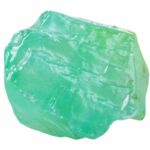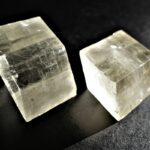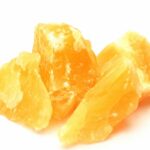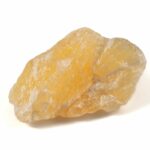When it comes to crystals, there are so many different types. Some stones of the same family can be so similar that it can be hard to tell them apart, and this is especially true when you come across different variations of Calcite.
There are many different types of Calcite in a huge array of different shades. Some of these Calcite crystals do share similar properties, but being sure you know which one you work with is important.
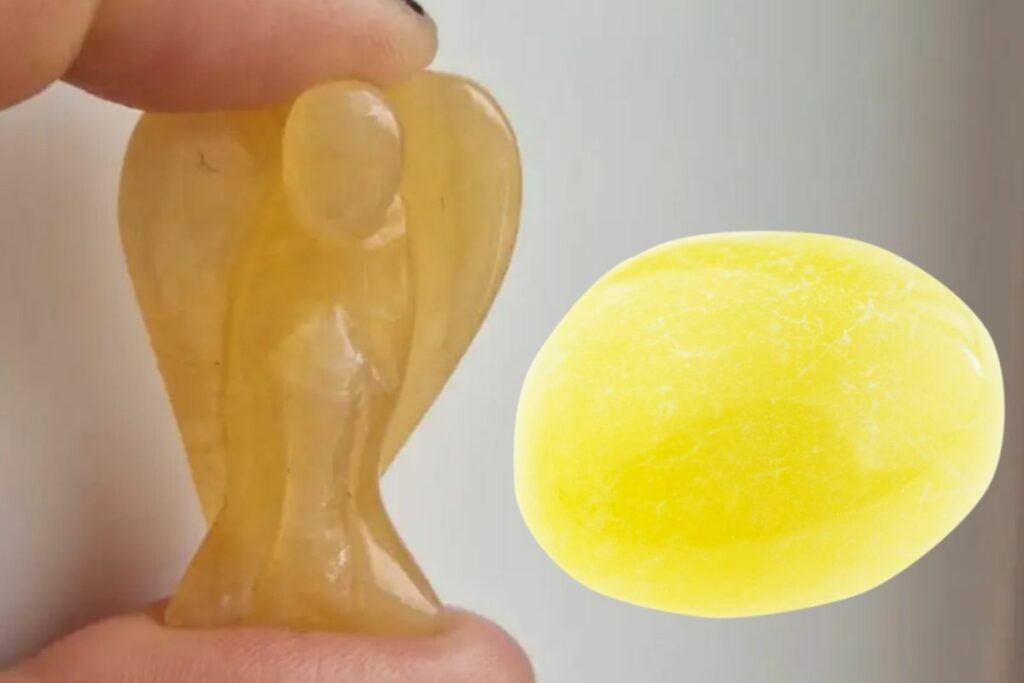
Two types of calcite that are especially popular (but a little confusing) are Honey Calcite and Yellow Calcite, but how exactly do you tell the difference between them?
It can be difficult at first, but once you know what to look out for, it’s quite a straightforward process.
Read on to find out how to identify Honey Calcite vs Yellow Calcite.
What Is Honey Calcite?
Also known as Golden or Amber Calcite, Honey Calcite is known for its orange colour, which sometimes resembles honey, and it comes in a variety of different shapes and sizes.
Though it is called Honey Calcite, its name actually comes from the Greek term “Chalix”, which means “lime”.
It can be found in many different places all over the world, so it is one of the most abundant types of stones you can get your hands on.
It has many spiritual meanings, but most commonly, it is known for its ability to elevate the user’s awareness and focus of the mind.
This gemstone helps the user to concentrate better, and it relaxes the mind so you fall into that concentration more fluidly.
What Is Yellow Calcite?
Yellow Calcite is, of course, very similar in appearance to Honey Calcite, but they are actually quite different stones.
Yellow Calcite is more yellow/lemon in colour than Honey Calcite, and its colour actually depends on where it was mined in the world.
As it is a form of Calcite, it can be found in many different locations all over the world, and its colour will be slightly different depending on where it is mined.
In some places, it will be incredibly light lemon-yellow in colour, while in others, it will be more golden or light orange.
In terms of metaphysical properties, Yellow Calcite is known for its ability to connect the user to their spirit guides.
It encourages creative thinking, which makes it a fantastic stone to use when you are in the middle of a creative project.
Further reading: Yellow Calcite And Lemon Calcite.
Honey Calcite Vs. Yellow Calcite: How To Tell The Difference
If you are still a bit confused about how Honey and Yellow Caclite are different, don’t worry! I am going to go into a bit more detail here.
Let’s look at the similarities first.
Both Honey Calcite and Yellow Cacltie are, of course, both part of the same crystal family.
Both varieties are going to be yellow or orange in colour; the hue just differs depending on where it is mined.
Another similarity is the fact that all types of Calcite have a deep grounding energy, and they connect you to both your inner spirit and the earth.
Now, in terms of differences, once you get to know both of these variations of Calcite, you will learn that they are quite different stones.
Honey Calcite is closer to orange or ‘honey’ in colour, and Yellow Calcite is usually lime-yellow or golden in colour.
While they are both known for their grounding properties metaphysically, that’s just about where the similarities end.
Honey Calcite is used to improve the focus of your mind, and it promotes better concentration for the user.
Yellow Calcite, on the other hand, is used more for creative thinking and connecting its users to their spirit guides.
Both Honey Calcite and Yellow Calcite are great to use when you want to work with the Solar Plexus Chakra, but Yellow Calcite also has ties with the Third Eye Chakra as well.
They both work better with different elements as well – Honey Calcite is better for the element of Air, and Yellow Calcite is better for the element of Water.
While there are, of course, some similarities between Honey Calcite and Yellow Calcite, once you get more familiar with them, the differences become more obvious.
The best way to tell the difference is to look at the colours of both. If the crystal you have is more yellow/golden in colour, it is likely Yellow Calcite, whereas if it is more orange/honey in colour, it is more likely to be Honey Calcite instead.
Further reading: Honey Calcite Vs. Orange Calcite.
Metaphysical Properties Of Honey Calcite
This stone is mainly a crystal of focus and concentration, but there are many other metaphysical properties you can use this stone for.
Honey Calcite is also great for clearing toxicity that can be found in both your mind and your body. It will ‘clear the air,’ so to speak, and give you the chance to wipe the slate clean and start over.
Another fantastic metaphysical property associated with this stone is that it helps in developing judgements and critical thinking skills.
You may also like: How to cleanse Honey Calcite.
Metaphysical Properties Of Yellow Calcite
Yellow Calcite is fantastic for creative thinkers, but there are lots of other reasons why you should use this stone.
This crystal also helps in developing confidence, and it actively encourages the user to come out of their shell. It promotes positive thinking and stops negative thoughts from consuming you.
As it is connected to the Third Eye, Yellow Calcite is great for the mind.
It increases and improves memory and helps the user with discernment and thinking for themselves. It encourages independent thinking in a fluid and effective way.
You may also like: How to cleanse Yellow Calcite.
Final Thoughts
Both Honey Calcite and Yellow Calcite are incredibly similar, but you should have a better idea about what makes them different now.
Aside from the key differences between their metaphysical properties, both stones just look different, too.
Remember: Honey Calcite is more orange/honey in colour and Yellow Calcite yellow/golden in colour.
Use the information I have provided for you here to correctly tell the difference between these two gems with confidence.
- Pegasus Symbolism: Understanding The Spiritual Meaning And Dream Meaning Of Pegasus - November 5, 2023
- 50 Beautiful Moonstone Affirmations To Try - November 5, 2023
- The 6 Best Samhain Crystals To Work With This Spooky Season - October 23, 2023

